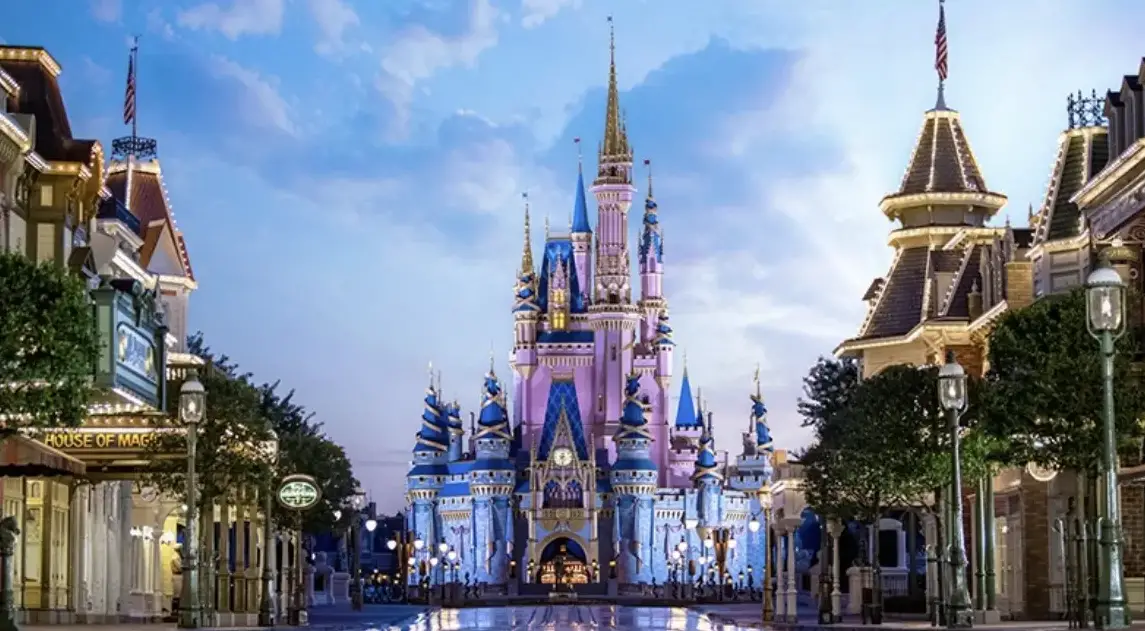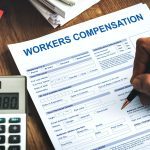I often earn from qualifying purchases. This includes Amazon Associates.
Disney’s Daily Revenue from Theme Parks
The Walt Disney Company generates impressive revenue through its theme parks, with Walt Disney World alone earning an average of $19.68 million per day or about $20 million when considering annual profit solely from park operations. In fiscal 2022, the company’s Parks, Experiences and Products segment brought in a total of $7.234 billion.
Factors contributing to the success of Disney’s amusement parks
- Innovative attractions: The unique rides and experiences offered at Disney parks such as Magic Kingdom Park and Disneyland Paris keep guests coming back for more unforgettable memories.
- Mickey Mouse & other iconic characters: Beloved characters like Mickey Mouse continue to drive interest in visiting these popular destinations.
- Premium pricing strategy: High ticket prices reflect the premium experience that visitors can expect at these world-class amusement parks.
- Cross-promotion with media properties: The integration of popular movies and TV shows into their theme park offerings helps attract fans who want to immerse themselves in their favorite stories.
Operating expenses for The Walt Disney Company
To maintain its high-quality standards across all aspects of its business, including theme parks like Hollywood Studios and Disneyland Park, the company incurs significant operating costs each year. These expenses include employee salaries (with an average annual salary ranging between $30k-$125k depending on job title), maintenance fees for attractions such as roller coasters or water slides within their resorts like Magic Kingdom or Epcot Center, marketing campaigns aimed at promoting new attractions or events at their parks, and more.
In spite of the hefty expenses, Disney is still raking in considerable income from its theme parks. This success can be attributed to a combination of factors such as the company’s ability to create immersive experiences for guests through innovative attractions like Star Wars: Galaxy’s Edge, strong brand recognition with characters like Mickey Mouse and other iconic figures, premium pricing strategies that reflect the quality of their offerings, and cross-promotion efforts between their media properties (movies & TV shows) and theme park experiences.
The theme parks of The Walt Disney Company are a major factor in the company’s profitability. With record revenues being reported in recent quarters despite ongoing challenges posed by external factors such as global pandemics or economic downturns – it is clear that this segment remains an essential component within Disney’s overall business strategy moving forward into future years ahead.
Innovative Attractions and Realistic Experiences
One reason behind the success of Disney’s theme parks is their innovative attractions that seamlessly integrate into natural environments like Bryce Canyon National Park mountains or provide realistic experiences such as 3D shows using relevant smells on-screen. These immersive elements keep guests coming back for more unforgettable memories.
Examples of Unique Rides at Disneyland and Other Resorts
- Pandora – The World of Avatar: Located in Disney’s Animal Kingdom, this land features breathtaking landscapes inspired by James Cameron’s movie “Avatar.” Guests can explore floating mountains, bioluminescent forests, and ride on the back of a banshee through the Flight of Passage attraction.
- Radiator Springs Racers: This Cars-themed attraction in Disney California Adventure takes visitors on an exciting race through Ornament Valley with Lightning McQueen and other beloved characters from Pixar’s a€œCarsa€ franchise.
- Remy’s Ratatouille Adventure: A recent addition to EPCOT, this trackless dark ride shrinks guests down to rat size as they scurry around Gusteau’s restaurant kitchen while trying to avoid being caught by Chef Skinner. It was first introduced at Disneyland Paris.
- Mickey & Minnie’s Runaway Railway: Replacing The Great Movie Ride at Hollywood Studios, this unique experience combines state-of-the-art projection mapping technology with practical sets to transport riders into a wacky cartoon world featuring Mickey Mouse and friends.
Technological Advancements Enhancing Visitor Experience
Disney’s theme parks are known for their continuous innovation, utilizing cutting-edge technology to create immersive and memorable experiences. Some notable examples include:
- Audio-Animatronics: Disney has been a pioneer in the development of lifelike robotic figures since the 1960s. Their Audio-Animatronics have evolved over time, becoming more advanced and realistic with each new attraction.
- MagicBands: These RFID-enabled wristbands allow guests to access their park tickets, FastPass+ reservations, hotel rooms, and even make purchases throughout Walt Disney World property. The MagicBand system streamlines guest experience while also providing valuable data on visitor behavior for the company.
- Augmented Reality (AR): With attractions like Star Wars: Galaxy’s Edge at Disneyland Park and Hollywood Studios, Disney is integrating AR technology into its parks through apps such as Star Wars: Datapad, which allows visitors to interact with droids or translate alien languages using their smartphones.
In conclusion,
Maximizing Spending Per Visitor Strategy
Recently, there has been a shift in strategy towards maximizing spending by each visitor rather than increasing overall guest numbers at Disney’s resorts. This change has led to several controversial decisions such as transforming Fastpass+ (a free service) into Genie+, which now requires payment, alongside charging resort guests for parking vehicles at hotels.
Impact on Customer Satisfaction Levels Due to These Changes
The introduction of paid services like Genie+ and hotel parking fees has sparked mixed reactions from Disney’s loyal customer base. While some visitors appreciate the option to pay for additional conveniences and enhanced experiences, others feel that these changes detract from the magic of visiting a Disney park. As a result, it remains crucial for The Walt Disney Company to strike a balance between boosting revenue through upselling opportunities while maintaining high levels of customer satisfaction.
Pros and Cons Associated with This Approach
- Pros:
- Increase in per capita spending: By offering premium services and amenities, Disney can generate more revenue from each visitor without necessarily increasing attendance rates.
- Better crowd management: With fewer people opting for expensive add-ons like Genie+, wait times may decrease at popular attractions – improving the overall experience for all guests.
- Diversified income streams: Introducing new paid features allows Disney to explore alternative sources of revenue beyond traditional ticket sales or annual passes.
- Cons:
- Perceived value erosion: Charging for previously free services may lead to negative perceptions of the Disney brand, potentially impacting customer loyalty.
- Inaccessibility concerns: The introduction of paid features could create a divide between guests who can afford these premium offerings and those who cannot, affecting overall guest satisfaction levels.
- Increased competition: As other theme parks like Universal Studios or SeaWorld adopt similar strategies, Disney must continuously innovate to stay ahead in the market.
The Walt Disney Company’s decision to focus on maximizing spending per visitor has both advantages and drawbacks. While this approach allows them to generate more revenue from each guest without necessarily increasing attendance rates, it also raises questions about maintaining high levels of customer satisfaction. Ultimately, striking a balance between profitability and providing an unforgettable experience is crucial for sustaining success in the competitive world of amusement parks.
Disney has shifted its strategy towards maximizing spending per visitor rather than increasing overall guest numbers. This approach involves introducing paid services like Genie+ and hotel parking fees, which have sparked mixed reactions from customers. While it allows Disney to generate more revenue without necessarily increasing attendance rates, it also raises concerns about maintaining high levels of customer satisfaction and the potential erosion of perceived value.
Media & Entertainment Division Earnings
Apart from theme parks, Disney’s media and entertainment division also contributes significantly to the company’s revenue. This segment generates approximately $687 million per month through content production costs, highlighting another essential aspect of The Walt Disney Company’s diversified income streams.
Popular Shows and Movies Produced by this Division
The media and entertainment division of The Walt Disney Company has been responsible for creating some of the most beloved shows and movies, generating approximately $687 million per month in content production costs. With properties such as Marvel Studios, Pixar Animation Studios, Lucasfilm Ltd., 20th Century Studios, and Walt Disney Animation Studios under its umbrella, it has produced a wide range of successful films like:
- The Lion King
- Frozen
- Avengers: Endgame
- Toy Story franchise
- Star Wars: The Force Awakens
Merchandise Sales & Licensing Agreements
In addition to park operations and media productions, Disney earns income from merchandise sales across various channels such as retail stores within their resorts or licensing agreements with third-party manufacturers. These additional sources of revenue further strengthen the company’s financial position in the market.
Examples of Popular Merchandise Items Sold at Disneyland
The Disney retail stores located within theme parks offer a wide range of exclusive products that appeal to guests of all ages. Some popular items include:
- Mickey Mouse Ears: The iconic Mickey Mouse ears are one of the most sought-after souvenirs for visitors to any Disney park.
- T-shirts and Apparel: Clothing featuring beloved characters like Mickey Mouse, Minnie Mouse, and other Disney favorites is always in high demand.
- Toys and Plushies: Stuffed animals representing classic characters such as Winnie the Pooh or newer additions like Elsa from Frozen can be found throughout Disneyland shops.
- Pins and Collectibles: Limited edition pins commemorating special events or attractions are highly coveted by collectors worldwide.
Major Licensing Partners Working with The Walt Disney Company
Beyond selling merchandise directly through its own retail outlets, The Walt Disney Company also generates significant revenue through licensing agreements with third-party manufacturers. This allows companies to produce goods featuring popular characters under license while paying royalties back to Disney. Some notable examples include:
- Hasbro: As a leading toy manufacturer, Hasbro produces various Disney-themed toys and games such as action figures, board games, and playsets.
- LEGO: The iconic building block company offers numerous sets based on popular Disney movies like Frozen or classic characters such as Mickey Mouse.
- Funko: Known for their distinctive Pop. Vinyl figurines, Funko has an extensive line of collectible figures featuring beloved Disney characters.
- Apparel Brands: Companies like H&M and Uniqlo have collaborated with Disney to create clothing lines featuring the brand’s most recognizable icons.
In conclusion, by leveraging its vast portfolio of intellectual property through merchandise sales and licensing agreements, The Walt Disney Company continues to diversify its revenue streams while reinforcing its strong presence in the market. This strategy not only enhances the overall guest experience at theme parks but also allows fans worldwide to engage with their favorite characters outside of park visits.
Disney makes a significant amount of money from merchandise sales and licensing agreements with third-party manufacturers. Popular items sold at Disneyland include Mickey Mouse ears, clothing featuring beloved characters, toys and plushies, and limited edition pins. Major licensing partners working with Disney include Hasbro, LEGO, Funko, H&M and Uniqlo.
FAQs in Relation to How Much Money Does Disney Make a Day
How much money does Disney make a day?
Disney generates approximately $57 million per day across its various business segments, including theme parks, media networks, and consumer products. This figure is based on their total revenue of $20.86 billion in Q1 Fiscal Year 2022.
How much money does Disneyland make a day?
While exact daily figures are not publicly available, it’s estimated that Disneyland Resort in California earns around $6.2 million per day from ticket sales alone. Additional revenue comes from food and beverage sales, merchandise purchases, and hotel stays within the resort.
How does Disney make most of its money?
The majority of Disney’s income comes from their Media Networks, which includes television channels like ESPN and ABC as well as streaming services such as Disney+. Theme parks also contribute significantly to the company’s earnings through admissions fees, guest spending on food and merchandise.
How much money does Disney World make in a year?
In pre-pandemic times (2019), Walt Disney World Resort was estimated to generate over $10 billion annually. This includes revenue from park admission tickets, hotel bookings, dining experiences at restaurants inside the resort area, and other entertainment options provided by them.
Conclusion
Disney has established itself as a leading business powerhouse, with its amusement parks providing an essential source of income. The company’s innovative attractions and strategic adaptations have helped it remain profitable while balancing customer satisfaction levels.
In addition to theme park revenues, Disney has diversified revenue streams through media and entertainment divisions, merchandise sales, and licensing agreements. Adapting to changing market conditions has been crucial for Disney’s success over time.
Amazon and the Amazon logo are trademarks of Amazon.com, Inc, or its affiliates.






